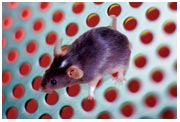Tumor suppressor p16INK4A regulatespolycomb-mediated DNA hypermethylation in human mammary epithelial cells
Several markers are used for the identification of breast cancer progression in women, these include an upregulation of the ER α, ER β, PR etc. The pattern of gene expression leading to this is a very hot topic of scientific research. In this article, the authors propose a model where loss of p16INK4A function in the mammalian epithelial cells stimulated the upregulation of polycomb group (PcG) of proteins to form repressor complexes which bound and transcriptionally silenced loci involved in cell-fate processes. A candidate is the HOX9A locus, which transcribes genes necessary for lactational differentiation and is absent in breast cancer cells. The eventual result is the de novo DNA hypermethylation. The data from this study suggest that the epigenetic changes initiated by loss of p16INK4A activity are among the earliest events in breast tumor progression.
Kim Nguyen
